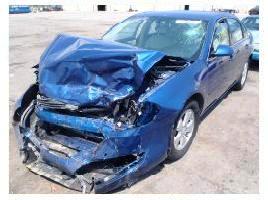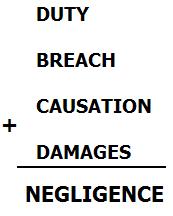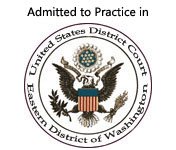Ask an Attorney a Question for FREE!
Who is at Fault?
Learn How Insurance Companies Determine Fault
Who is at fault for the accident? How does a claim adjuster determine that you are at fault? While we are answering these questions, you could also ask:
How does a judge, an attorney, an arbitrator, or a jury determine that someone is at fault? Or how do they determine that someone is more at fault than someone else?
When determining fault, insurance companies and the legal community use the term “liability.”

Liability really equates to fault when talking about car accidents. Liability in turn equates to negligence. They use these terms interchangeably, so please do not be confused by the terminology.
When insurance adjusters look at fault, they are really looking at the legal concept of negligence.
Negligence is a “tort”, which is defined as a civil wrong. When someone “wrongs” you (hits your car), then that someone committed a civil wrong against you. This means that you can take them to a civil court to seek remedies.
|
|
Why is this important?
It is important because the Law of Torts is what determines and dictates the way insurance companies look at car accidents. The key thing to remember is that the tort of negligence LACKS a very important element - INTENT.
When dealing with car accidents, we are assuming that no one tried or intended to cause a collision or a wreck. If the accident was caused by an intentional hit, the analysis would fall outside the realm of negligence. It would still be a civil wrong, but it would be called “An Intentional Tort” - of course, if it is “intentional” then it is not an “accident.”
Assault, battery, intentional infliction of emotional distress, trespassing, false imprisonment, and conversion are all intentional torts. They can also fall within the realm of criminal law.
If you can show (prove to a court of law) that the accident was intentional, the responsible person can go to jail for assault (criminal assault) and be sued in civil court for money damages (intentional tort of assault).
Most car accidents fall within in the tort of negligence. By law (United States Supreme Court decisions), in order to prove someone negligent, there are certain elements that must be shown by preponderance of the evidence (more likely than not).
Those elements are:

Therefore, the insurance company must prove by the same standard (preponderance of evidence) that all the elements above existed. If they are successful, then negligence exists and therefore fault is attributed.
Remember that fault or negligence does not have to be a “all or none” preposition. Percentages are often used to attribute fault to both drivers (i.e. Driver A is 20% at fault and Drive B is 80%).
However, after negligence is determined and fault attributed to each driver, then your state law will operate. Your state law will determine how the percentage of negligence should be treated.
It is very important then to determine if your state follows a pure comparative, contributory negligence, or a modified comparative negligence scheme (I will explain all of them here).
The first step for determining fault is to analyze each single element of negligence for each driver.
Follow the links below to determine who is at fault for this particular accident. The analysis for the accident above is the same analysis that will apply to your specific situation.
Remember that police reports are considered strong evidence, so if you got a ticket, it is important to dispute them. Read the speeding ticket eBook or the traffic ticket eBook to get your citation dismissed.
Traffic Ticket eBook
Speeding Ticket eBook
Determining fault for the accident
Driver DUTY
Rules of the Road of your State
Driver BREACH
CAUSATION
DAMAGES
State Accident Law
|
For a Free Review of Your Case
Please Call (866) 878-2432 |


